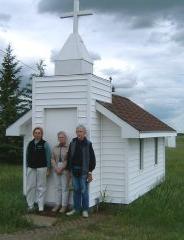
So I’ve been thinking about why that is. McIntosh lists some characteristics of smaller churches that seem to help. They are more relational than medium and large churches. Everyone knows everyone. They may not all be bestest buddies but they all know each other. Those kinds of places feel more comfortable.
Then I got to something in McIntosh that I’ve been saying about bigger churches even before I knew much about bigger churches. The groups that make up bigger churches are essentially congregations within congregations. Bigger churches are not larger groups of people as much as they are larger groups of smaller groups. If you have a larger church you have to have small groups for people to plug in to or they get lost and overlooked.
Larger churches around the world have followed this same Less Is More Principle by emulating small churches. As they have grown larger, they have added more small groups within which people may receive the same level of care once thought only possible in the smaller church. – Gary McIntosh, One Size Doesn’t Fit All, 161Something that I wondered about when thinking of church size was growth. You can play games to grow your church and compromise an awful lot of important things. Most TV evangelists have huge churches and they couldn’t compromise more if they had to. But not all big churches have compromised. Some like Spurgeon’s Metropolitan Tabernacle or John Piper’s Bethlehem Baptist are in the range of about 3,000 and they in no way compromised. They have great preachers who draw the crowds. But what if God doesn’t give your church a great outreach like that and you still grow?
What about Acts 2 when 3,000 were added? Was that, then, just one big church with no small groups? Well, consider this. At that time church leadership was the Apostles. There were 12 Apostles and there were around 3,000 people and 3,000 ÷ 12 = 250. So if the church as it was at that time was divided amongst the Apostles for care, then the group sizes would have been roughly the size of the majority of churches today.
In order to effectively care for people in a church, there has to be a small congregation at some point. Medium and large churches know this and implement them. As I consider church size and what churches need to be like as they move beyond the smaller church size it seems to me that the heart of the small church cannot be abandoned. The church itself may restructure but what the people are cannot. I’m not saying that McIntosh or medium or large churches say otherwise; more than that, I’m reminding myself that what I love about a small church a) is normal, b) doesn’t have to be abandoned in a bigger church and c) can be found in medium and larger churches. It seems to be who we are as people. When Jesus was about to feed the 5,000 he had his disciple have them sit in groups of about 50. People like small groups it seems!


Be the first to leave a comment. Don’t be shy.